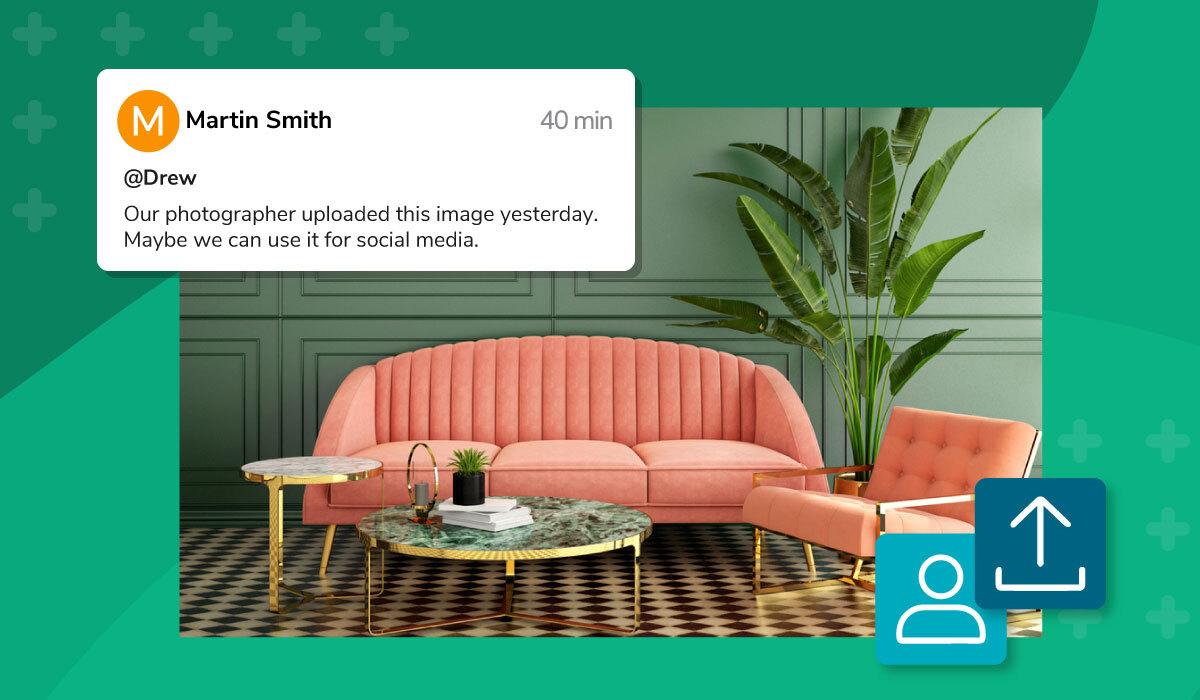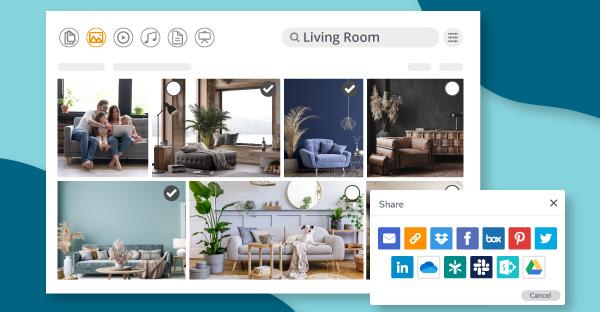Enhancing digital content collaboration in the hybrid workplace
| January 25, 2022

Today’s marketing and creative teams often lack the resources or bandwidth to handle every aspect of their campaigns in-house. Even large enterprises with sizable budgets frequently find themselves turning to outside agencies or freelancers to provide specialized support. Sometimes those engagements are simple, involving a single agency or point of contact working on a single project. In other cases, however, multiple parties could all find themselves collaborating on a task, with everyone involved having to share content back and forth.
With the rapid growth of hybrid and remote work environments, the complexity of these engagements becomes even greater. Organizations must now think about how they can keep their remote employees connected to the resources they need while also maintaining smooth communication with third-party vendors. For larger projects and long-term engagements, confusion and frustration can quickly undermine productivity unless a process is put in place to facilitate ongoing collaboration.
Challenges with sharing assets
One of the biggest challenges marketing teams face when working with outside collaborators is how to make their digital assets available in a way that’s secure and easy to manage. Cloud storage services have made collaboration across other business functions much easier, but platforms like Google Drive and Dropbox were not specifically designed to meet the needs of creative teams.
Here are a few of the biggest challenges related to sharing assets that frequently combine to undercut productivity:
Permissions
Most cloud storage platforms manage access to files based on user permissions. In theory, this is a perfectly reasonable approach that prevents people without authorization from opening or altering files. When it comes to collaborating with third parties outside the organization, however, it can quickly become a huge headache. Not every collaborator may have access to each platform being used, causing bottlenecks and confusion. Since organizations often use these platforms to store more than just content, they need to be very careful about how they grant permissions to avoid potential security issues.
All of this must be carefully managed for everyone who needs access, and then all the permissions need to be removed once the project is completed. If multiple platforms are being used to store and work with assets, it quickly becomes difficult to track who has access to what. Each time a new collaborator joins the team, a new set of permissions must be set up to give them access, which makes it more difficult for them to get underway.

Locating assets
Even after access permissions have been sorted out, people involved with the project still need to be able to find the right assets for their current task. Unfortunately, cloud storage platforms sometimes make that process far more difficult than it needs to be. Between rudimentary search functions and poor organizational tools, it’s often quite hard to locate a specific file in a timely manner. That translates into inefficiency, frustration, and, at worst, missed deadlines.
All these challenges are made worse when multiple cloud platforms are being used by each organization. Without a single source of truth for digital assets, collaborators frequently find themselves searching through multiple systems to locate the content they need, which only creates further delays. There’s also the potential security issue of having third parties rummaging through an organization’s cloud storage looking for assets and stumbling upon confidential data.
Content sharing
Sharing and receiving content can also prove quite difficult when multiple external collaborators are involved. Without a single source of truth for all content, it can be hard to know where assets need to be uploaded and what schema should be followed to keep them organized. As files are uploaded, downloaded, and then reuploaded into shared folders by several collaborators, there are ample opportunities for confusion and mistakes to be made, resulting in unnecessary delays and duplicated work. Distributing uploaded content also poses a challenge when multiple parties are involved. Granting access to individual assets stored in various shared platforms is both tedious and confusing, which only serves to undermine productivity.
Content sharing uncertainties are particularly dangerous because they can easily undermine version control. If no one is entirely sure the asset they’re working with is the most up-to-date version, they could end up duplicating work that’s already been done or failing to incorporate changes that were made on a previous version of a file. While it’s possible to maintain version control manually with strict oversight, all it takes is one person to grab the wrong file or mislabel another to create huge problems in content production.
Streamlining collaboration with digital asset management software
Digital asset management (DAM) solutions can help organizations overcome these collaboration challenges by creating a single source of truth for all digital assets while also making them easy to share and access. Rather than trying to store content like high-resolution images, videos, and audio files across multiple storage services, they can instead set up their digital asset management platform to accommodate third party collaborators.

Consolidating digital assets into a single location makes it much easier to manage permissions and limit potential security risks. Account administrators can simply grant privileges from a centralized control panel, allowing them to designate which external contributors can make edits and upload files and which can simply view and download assets. These permissions enable teams to structure collaborative workflows that make it very clear who has ownership over key steps of the content creation process.
Unlike most cloud storage platforms, digital asset management solutions are specifically designed to make it easier to organize and locate digital assets. In addition to folders and albums that can be sorted in multiple ways, every file within the system can be located quickly by searching for metadata labels like tags and keywords. Sophisticated digital asset management solutions can even tag content automatically using image recognition software. Even if an asset isn’t labeled correctly, it can still be found easily with a simple contextual search. This substantially reduces the amount of time it takes to retrieve content.
For collaborative projects involving multiple third-party contributors, digital asset management platforms make it much easier to share content and reduce version confusion. The most effective way to share assets is by creating customized portals that provide access only to content that’s relevant to the project at hand. Permissions can be fully integrated into the portal itself, instantly granting access to creative teams without having to manage account status individually. Since the customized portal only connects to assets related to the scope of work, there are minimal security concerns.
A digital asset management platform can also use shareable links to provide access to content or allow third-party collaborators to upload assets. This is especially useful for smaller projects where content only needs to flow in one direction. An agency or freelancer that provides images from a photo shoot, for instance, only needs the ability to upload content rather than access the entire library.
Far from adding more complexity, digital asset management solutions make it easier than ever for organizations to receive and share assets in a digital-first world. They create a single source of truth that allows both internal and external collaborators to work together seamlessly as they create memorable brand content that helps organizations communicate their story to the world. To learn more about how digital asset management solutions like Canto can transform the way your creative teams manage digital assets.

